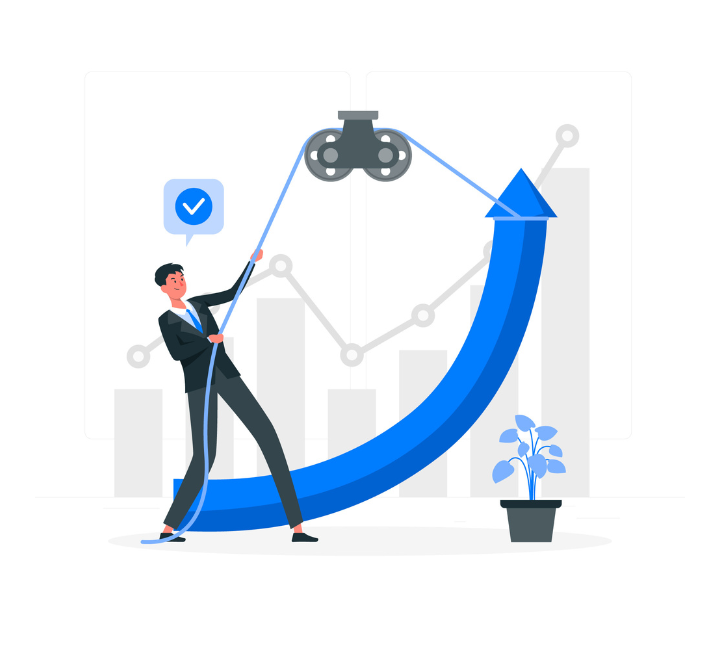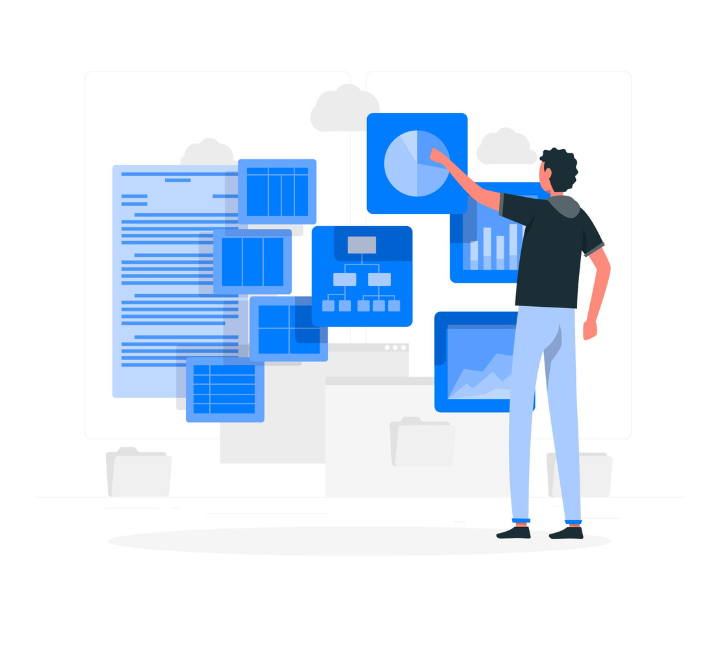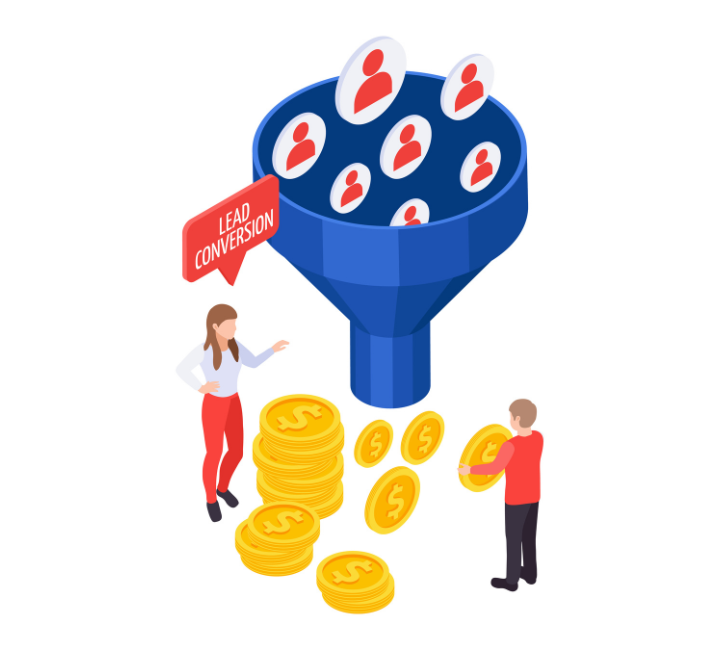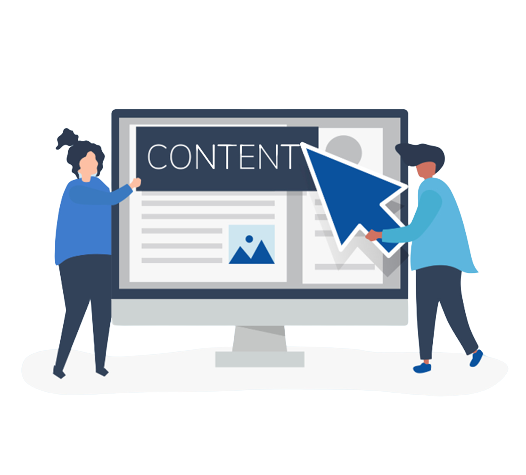Demand Generation 101: Strategies for Building a Robust Pipeline

Introduction
Welcome to the world of demand generation, where we'll unravel the secrets to supercharging your business's growth. In this article, we'll break down the idea of demand generation in a simple and approachable way, and show you why a strong sales pipeline is a game-changer for businesses just like yours.
What Is Demand Generation?
Think of demand generation as the magic behind getting people interested in what you have to offer. It's about spreading the word, piquing their curiosity, and convincing them to explore what your product or service can do for them. It's a vital part of making sure your marketing and sales efforts pay off.
Why a Robust Pipeline Matters
Imagine your sales pipeline as a treasure chest filled with golden opportunities. The more valuable leads and potential customers you have inside, the more chances you have to turn them into loyal customers. A robust pipeline ensures a steady stream of these opportunities, which means more revenue and growth for your business.
What Lies Ahead in This Article
Now that you know why demand generation is so important, let's take a sneak peek at what you'll discover as we journey through this article:
1. Understanding Demand Generation: We'll dive into the world of demand generation, exploring what it is and why it's such a big deal for businesses.
2. The Fundamentals of Successful Demand Generation: You'll learn how to connect with your target audience, create awesome content, and make the most of different marketing channels.
3. Strategies for Effective Demand Generation: We'll talk about the difference between inbound and outbound demand generation, how to make your website shine on search engines, and how to conquer social media.
4. Lead Generation Techniques: Find out how to attract potential customers, design killer landing pages, and keep the conversation going with email marketing.
5. Measuring and Analyzing Demand Generation Efforts: We'll get into the nitty-gritty of tracking success, using tools like Google Analytics, and even check out real-world examples.
6. Challenges and Pitfalls: We'll share some common missteps to avoid and show you how to stay flexible in a changing market.
7. Future Trends: Lastly, we'll peek into the crystal ball and explore the role of AI, automation, sustainability, and ethics in the future of demand generation.
The Big Takeaway
Before we dive into the world of demand generation strategies, remember this: it's all about sparking interest and curiosity in potential customers. With a robust pipeline, you're setting your business up for a continuous flow of opportunities and the potential for remarkable success.
What Is Demand Generation?
Demand generation is like setting the stage for a blockbuster show. It's the process of creating awareness and interest among potential customers. Think of it as turning the spotlight onto your product or service and making sure your target audience knows it exists.
The Role of Demand Generation in Sales and Marketing
Demand generation is like the engine that drives the entire marketing and sales machine. It's what fills your sales pipeline with leads and potential customers. Without demand generation, your business could remain hidden in the shadows.
Key Objectives of Demand Generation
Now, let's talk about what demand generation aims to achieve:
1. Awareness: It's all about making sure people know your brand exists and what you offer.
2. Interest: Once they're aware, you want to pique their interest. You want them to say, "Tell me more."
3. Consideration: At this stage, potential customers are seriously thinking about what you offer. They're weighing their options.
4. Conversion: This is where the magic happens. You turn interested folks into paying customers.
5. Loyalty and Advocacy: After a successful conversion, you want them to keep coming back and even become your brand advocates.
Why Understanding Demand Generation Matters
Imagine you're throwing a surprise party, and you want as many friends as possible to show up. Demand generation is like sending out invitations. If you don't send them or make your party known, hardly anyone will come. But with well-crafted invitations (demand generation), you'll have a packed house!
Identifying Your Target Audience
Imagine you're a fishing enthusiast. Before you cast your line into the water, you need to know what kind of fish you're after and where they swim. Similarly, in demand generation, it's crucial to identify your target audience—the people most likely to be interested in your product or service.
1. Buyer Personas
Buyer personas are like detailed sketches of your ideal customers. They help you understand their needs, preferences, and pain points. Creating these personas allows you to tailor your marketing efforts specifically to the people you want to reach.
2. Market Segmentation
Market segmentation is like dividing your big fishing pond into smaller sections, each teeming with a particular type of fish. It involves categorizing your target audience into smaller groups based on factors like age, location, interests, and more. This way, you can craft messages that resonate with each segment.
Creating Valuable Content
Imagine you're a storyteller, and your audience is eagerly waiting for your next tale. To keep them engaged, your stories need to be captivating, informative, and relevant. In demand generation, content plays the role of your storytelling.
1. Content Marketing Strategies
Content marketing is about creating and sharing valuable information to attract and engage your target audience. It could be blog posts, videos, infographics, or any form of content that educates or entertains. The goal is to build trust and keep your audience coming back for more.
2. Content Types and Formats
Just as a diverse library of books attracts a broader range of readers, offering various types and formats of content appeals to a wider audience. You can use articles, videos, podcasts, webinars, and more to reach your audience effectively.
Leveraging Multi-Channel Marketing
Imagine you have a powerful message, and you want to broadcast it on different channels to ensure it reaches a broad audience. Multi-channel marketing involves using various platforms and methods to connect with your potential customers where they spend their time.
1. Exploring Different Marketing Channels
This includes your website, social media, email, and even offline methods like events or trade shows. Each channel serves as a unique stage for showcasing your message.
2. Omnichannel Integration
Omnichannel marketing takes it a step further. It's like having a seamless experience across all channels. Your audience should feel like they're interacting with the same brand, whether they're on your website, social media, or receiving an email.
Now that we've covered the fundamentals, it's time to explore the strategies that can make your demand generation efforts truly effective.
Inbound vs. Outbound Demand Generation
Imagine you're a friendly tour guide. Inbound demand generation is like tourists coming to you because they heard about your fantastic tours. Outbound is when you actively reach out to potential tourists. Both have their merits.
1. Pros and Cons
Inbound generates leads naturally, as people find you through content or online searches. Outbound is more proactive, allowing you to target specific audiences.
2. Finding the Right Balance
The key is finding the right mix for your business. Some companies excel with inbound strategies, while others find success with outbound efforts.
SEO and SEM for Demand Generation
Imagine your website is a treasure map, and search engine optimization (SEO) is the path that guides treasure seekers (your potential customers) to your site. It's a powerful tool for demand generation.
1. Optimizing Website for Search Engines
Optimizing your website makes it more discoverable. It involves using the right keywords, creating high-quality content, and improving user experience.
2. Paid Advertising Tactics
Search engine marketing (SEM) uses paid ads to boost visibility. It's like paying for a banner on a busy street. Google Ads and similar platforms allow you to target specific keywords and demographics.
Social Media Marketing
Imagine you're hosting a party, and you want everyone to know about it. Social media marketing is like sending out invitations and updates about your party to a wide audience.
1. Engaging with Your Audience
It's essential to actively interact with your followers, respond to comments, and foster a sense of community.
2. Using Social Platforms Effectively
Different platforms attract different crowds. Tailor your content to match the platform's style and audience.
Lead Generation Techniques
Now, let's talk about techniques to attract potential customers and turn them into leads, much like catching fish to fill your net.
1. Creating Compelling Lead Magnets
Lead magnets are valuable offers that entice people to share their contact information. This can include ebooks, whitepapers, webinars, or any valuable resource.
2. Implementing Effective Landing Pages
Landing pages are like dedicated booths at a fair. They provide all the information a potential customer needs and encourage them to take action, such as signing up for your newsletter or requesting more information.
3. Email Marketing for Lead Nurturing
Once you've hooked potential leads, you need to nurture them until they're ready to become customers.
- Drip Campaigns
Drip campaigns are a series of automated emails that gradually guide leads through the sales funnel.
- Personalization Strategies
Personalized emails that speak directly to the recipient's interests and needs can significantly improve conversion rates.
By mastering these strategies, you'll be well on your way to building a robust sales pipeline through effective demand generation. In the final part of this article, we'll explore how to measure your efforts and some key takeaways.
Measuring and Analyzing Demand Generation Efforts
Imagine you're running a marathon, and you want to know how well you're doing. Measuring demand generation is like checking your progress during the race. It's crucial to track your efforts and adjust your strategy accordingly.
Key Metrics for Demand Generation
To measure success, focus on these key metrics:
Conversion Rates: This tells you how many leads turned into customers. It's like counting how many people reached the finish line.
Cost Per Acquisition (CPA): This shows how much you spent to acquire each customer. It's like calculating the cost of running the marathon.
Tools and Analytics Platforms
Just as a runner uses a stopwatch to track time, you'll need tools to measure your efforts:
Google Analytics: It's like having a coach who monitors your every move during the race. Google Analytics tracks website traffic, user behavior, and more.
Marketing Automation Software: This tool helps you manage and analyze your marketing campaigns. It's like having a GPS system that guides you through the marathon route.
Lessons Learned from Industry Leaders
It's like getting tips from elite marathon runners. We'll uncover the insights and tactics used by industry leaders to achieve demand generation success.
Challenges and Pitfalls in Demand Generation
No marathon is without obstacles, and demand generation is no different. Let's talk about common challenges and how to overcome them.
Common Mistakes to Avoid
Avoiding pitfalls is like knowing where the tricky parts of the marathon route are. We'll discuss errors to steer clear of on your demand generation journey.
Adapting to Market Changes
Just as a marathon runner adjusts their pace for varying terrains, you must adapt to changes in the market. We'll explore strategies for staying nimble and responsive.
Future Trends in Demand Generation
Finally, let's peek into the future of demand generation.
AI and Automation in Demand Generation
Imagine having a personal running coach who can analyze your every step and suggest improvements. AI and automation are set to play a more prominent role in fine-tuning your demand generation efforts.
Sustainability and Ethical Considerations
In a world where businesses need to be responsible stewards, we'll also discuss the growing importance of sustainability and ethical considerations in demand generation.
Conclusion
As we cross the finish line of this demand generation journey, let's recap the key takeaways:
Demand generation is about creating awareness, interest, and ultimately, loyal customers.
Identifying your target audience, creating valuable content, and leveraging various marketing channels are fundamental.
Strategies like inbound and outbound marketing, SEO, social media, and email marketing play critical roles.
Lead generation techniques help you attract, engage, and convert potential customers.
Measuring your efforts with key metrics and using tools like Google Analytics and marketing automation software is essential.
Learning from case studies and industry leaders, overcoming challenges, and adapting to market changes are key to success.
The future of demand generation includes AI, automation, sustainability, and ethical considerations.
Armed with these insights and strategies, you're well-prepared to master demand generation and build a robust sales pipeline for your business.
Related Articles
Say Hello to iSyndicate Ecosystem

Data Cloud
138+ million contacts that are ready to hear from you.

Email automation
That captures prospects intent actions.

Publishing network
That syndicates your content on 300+ B2B websites

AI voice bot
That communicate with prospects efficiently







